Synthomer Bundle
Who Really Controls Synthomer?
Want to understand the forces driving a global specialty chemicals giant? Unveiling Synthomer SWOT Analysis is just the beginning. Discovering the answer to "Who owns Synthomer?" is key to unlocking its strategic moves and future potential. From its historical roots to its current market position, the ownership structure of Synthomer plc reveals a fascinating story.
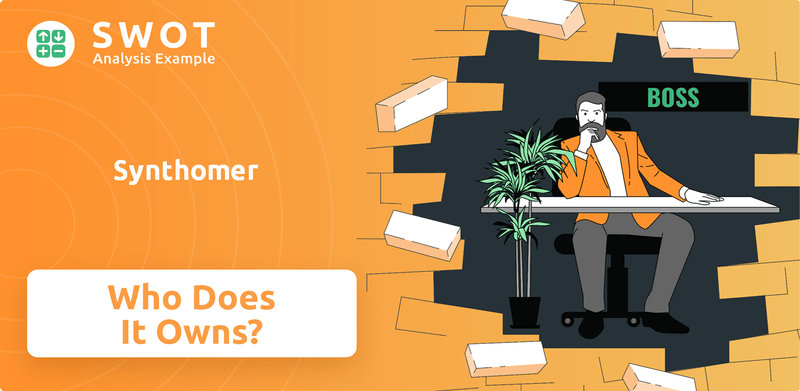
Understanding Synthomer ownership involves examining the influence of its major shareholders, the impact of its board of directors, and the evolution of its stock ownership over time. The 2023 rights issue, significantly supported by Kuala Lumpur Kepong Berhad Group, offers a recent snapshot of how Synthomer's ownership impacts its financial performance and strategic decisions. This exploration will provide insights into who controls Synthomer and the dynamics shaping this leading specialty chemicals company, including details on Synthomer's company profile and Synthomer shareholders.
Who Founded Synthomer?
The origins of Synthomer trace back to 1863, with the establishment of Andrew Yule & Co. in Calcutta and George Yule & Co. in London. These were founded by Andrew and George Yule, respectively. George Yule & Co. initially served as the British agency arm of Andrew Yule & Co.
In 1919, both entities were sold to J.P. Morgan & Co. and its British merchant banking affiliate, Morgan Grenfell & Co., transitioning from partnerships to private limited companies. This marked a significant shift in the company's ownership structure.
The company's early ownership structure evolved significantly over time, reflecting changes in the business environment and strategic decisions. The details of the initial equity split among the founders are not available in the provided information.
Several key events shaped the Synthomer ownership and its evolution from its founding. These events highlight the changes in the company's ownership structure over time.
- In 1920, the British purchasing arm, George Yule and Company, was renamed Yule, Catto & Company Ltd., controlled by the family of the first Lord Catto.
- In 1969, Yule, Catto & Co. sold its shareholding in Andrew Yule & Co. to the Indian government due to various economic factors.
- In 1971, Yule Catto & Co. Limited merged with Malaya General Company Limited, and the merged entity was listed on the London Stock Exchange.
- In 1980, the acquisition of Revertex Chemicals by Stephen Catto marked a transformation into an international specialty chemicals manufacturer.
Synthomer SWOT Analysis
- Complete SWOT Breakdown
- Fully Customizable
- Editable in Excel & Word
- Professional Formatting
- Investor-Ready Format
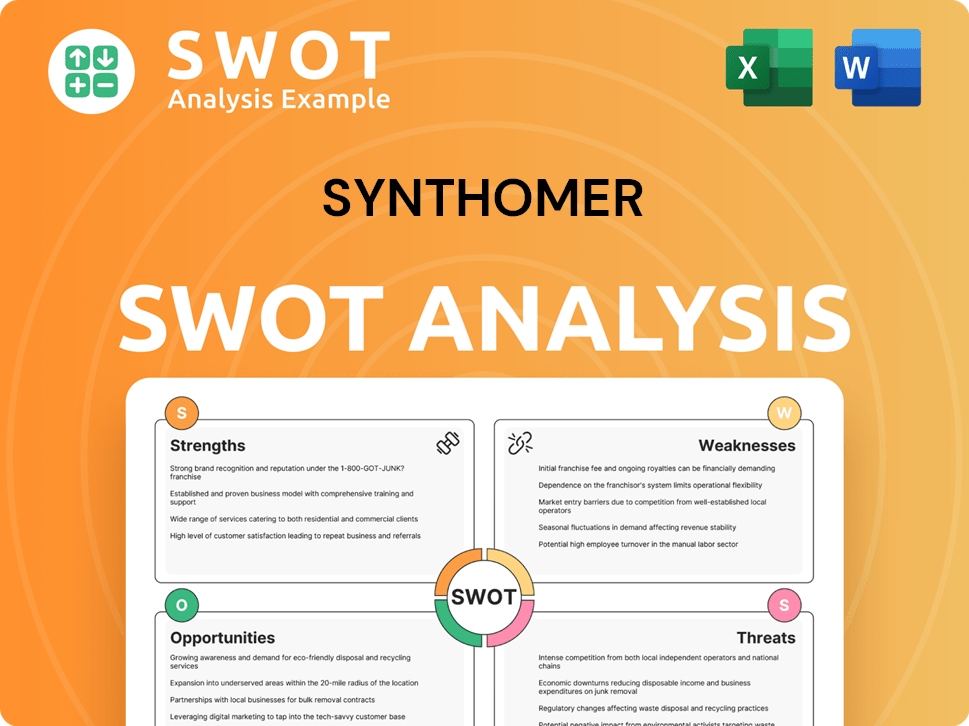
How Has Synthomer’s Ownership Changed Over Time?
The ownership structure of Synthomer plc (Synthomer) has seen significant shifts, especially in recent years. The company, listed on the London Stock Exchange since 1971, has evolved its shareholder base, with institutional investors playing a major role. Understanding the dynamics of Synthomer ownership is crucial for anyone interested in the company's strategic direction and financial performance. This overview of Synthomer ownership provides insight into the key players and their influence.
A pivotal event impacting Synthomer's ownership was the £276 million rights issue. Kuala Lumpur Kepong Berhad (KLK), a major shareholder, demonstrated its commitment by taking up its full entitlement. This action underscored KLK's confidence in Synthomer's future and its strategic importance within the company. The evolution of Synthomer's ownership structure is closely tied to its strategic initiatives, particularly its 'specialty solutions strategy'.
| Shareholder | Percentage of Shares Held | Approximate Number of Shares |
|---|---|---|
| Kuala Lumpur Kepong Berhad (KLK) | 26.89% | 43,986,318 |
| UBS Asset Management (UK) Ltd. | 17.14% | 28,038,592 |
| Greater Manchester Pension Fund | 5.94% | 9,719,706 |
As of May 23, 2025, Synthomer (Synthomer plc) had 39 institutional owners, collectively holding 67.7% of the shares, totaling 110,681,216 shares. Public companies held 26.9% (43,986,318 shares), individual insiders held 0.711% (1,161,974 shares), and the general public held 4.04% (6,597,384 shares). The company's total shares in issue as of March 11, 2025, were 163.5 million. The major shareholders, including KLK, UBS Asset Management (UK) Ltd., and Artemis Investment Management LLP, significantly influence the company's strategic direction. For more insights, consider exploring the Growth Strategy of Synthomer.
The major shareholders of Synthomer, such as KLK, UBS Asset Management, and others, play a vital role in shaping the company's future.
- KLK's significant stake and commitment to rights issues highlight its confidence in Synthomer.
- Institutional investors collectively hold a substantial portion of the company's shares.
- Changes in shareholder composition directly affect company strategy and governance.
- Understanding the ownership structure provides insights into the company's direction.
Synthomer PESTLE Analysis
- Covers All 6 PESTLE Categories
- No Research Needed – Save Hours of Work
- Built by Experts, Trusted by Consultants
- Instant Download, Ready to Use
- 100% Editable, Fully Customizable
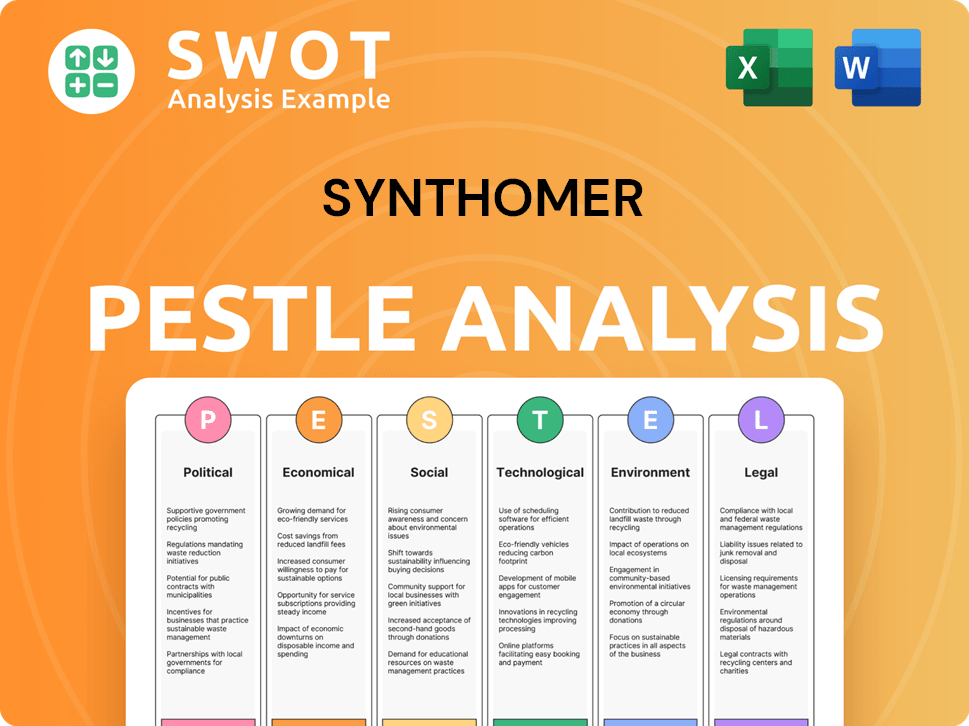
Who Sits on Synthomer’s Board?
The Board of Directors at Synthomer plc is central to the company's strategic direction and financial oversight. As of early 2025, the board includes a mix of executive and non-executive directors, with recent appointments reflecting a focus on governance and shareholder representation. The board's composition is designed to ensure effective oversight of the company's operations and strategic initiatives, including risk assessment and financial performance.
Key figures on the board include Peter Hill CBE, who became Chair in January 2025, and Michael Willome, the Chief Executive Officer since November 2021. Lily Liu serves as Chief Financial Officer, and Uwe Halder represents KLK OLEO Europe, a significant shareholder. The Honourable Alexander Catto, a long-standing board member, is expected to step down by May 2025. Other non-executive directors contribute diverse expertise to the board's decision-making processes. The board's structure and the individuals involved are crucial for understanding Synthomer's governance and the influence of its major shareholders.
| Director | Role | Notes |
|---|---|---|
| Peter Hill CBE | Chair | Independent Non-Executive Director since September 2024. |
| Michael Willome | Chief Executive Officer | Executive Director since November 2021. |
| Lily Liu | Chief Financial Officer | Executive Director since July 2022. |
| Uwe Halder | Non-Independent Non-Executive Director | Represents KLK, the largest shareholder. |
| The Honourable Alexander Catto | Non-Independent Non-Executive Director | Expected to step down by May 2025. |
Synthomer's voting structure operates on a one-share-one-vote basis. At the Annual General Meeting on May 9, 2024, 79.06% of the total votes were cast. The company actively engages with its Synthomer shareholders, taking their views seriously. The significant representation of KLK, holding 27% of the issued share capital, through Uwe Halder's appointment, highlights the influence of major Synthomer ownership.
The Board of Directors at Synthomer is responsible for the company's strategic direction and financial oversight. Key members include the Chair, CEO, CFO, and representatives of major shareholders. The voting structure is straightforward, with one share equating to one vote, and the board actively engages with shareholders. For more information about the company, you can read the article about 0.
- Peter Hill is the current Chair of the Board.
- Michael Willome is the Chief Executive Officer.
- Uwe Halder represents KLK, the largest shareholder.
- The voting structure is one-share-one-vote.
Synthomer Business Model Canvas
- Complete 9-Block Business Model Canvas
- Effortlessly Communicate Your Business Strategy
- Investor-Ready BMC Format
- 100% Editable and Customizable
- Clear and Structured Layout
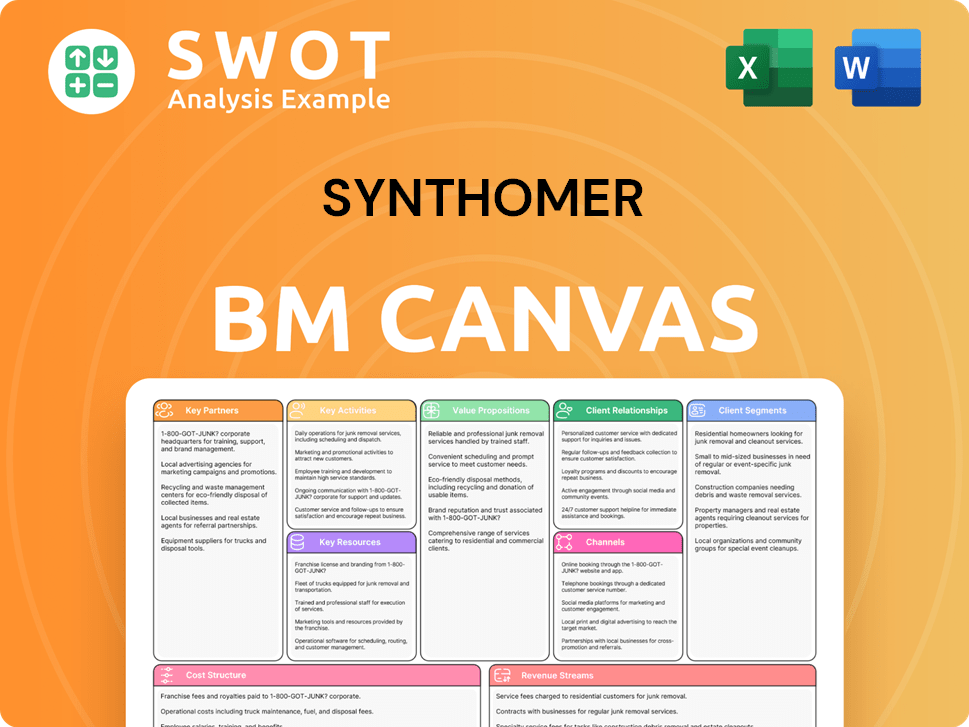
What Recent Changes Have Shaped Synthomer’s Ownership Landscape?
Over the past few years, the ownership structure of Synthomer has seen significant changes, driven by strategic decisions and market dynamics. In October 2023, the company completed a £276 million rights issue, aimed at reducing debt and focusing on specialty solutions. This move was strongly supported by Kuala Lumpur Kepong Berhad Group, its major shareholder, which fully participated in the rights issue. These actions reflect a proactive approach to financial management and strategic realignment.
Synthomer has also been actively adjusting its portfolio through divestments. In December 2023, the company sold its laminates, films, and coated fabrics businesses to Surteco Group for $255 million. More recently, on May 6, 2025, Synthomer announced the sale of William Blythe Limited, its inorganic chemistry business, for £30 million. These moves are part of a broader strategy to concentrate on higher-margin, more resilient specialty solutions. To learn more about the company's strategic direction, consider reading about the Target Market of Synthomer.
| Shareholder | Percentage of Ownership (as of May 23, 2025) |
|---|---|
| Kuala Lumpur Kepong Berhad | 26.89% |
| UBS Asset Management (UK) Ltd. | 17.14% |
| Greater Manchester Pension Fund | 5.94% |
| Artemis Investment Management LLP | 5.436% |
| Lombard Odier Asset Management (Europe) Ltd. | 5.374% |
Institutional ownership continues to be a key factor, with 39 institutional owners holding 7,735,284 shares as of May 23, 2025. The major shareholders include Kuala Lumpur Kepong Berhad, which holds a significant stake. Leadership changes have also played a role, with Peter Hill CBE appointed as Chair of the Board in January 2025. Uwe Halder joined the board in September 2024, representing KLK's interests. Michael Willome continues as CEO, leading the company's strategic repositioning.
Synthomer's ownership profile is shaped by strategic divestments and institutional holdings. Major shareholders like Kuala Lumpur Kepong Berhad play a crucial role in supporting the company's financial strategies. Recent leadership changes also reflect the company's evolving strategic direction.
In 2024, Synthomer reported revenues of £1,986.8 million and EBITDA of £146.6 million. The company anticipates further earnings progress in 2025, supported by ongoing self-help programs and strategic execution. This demonstrates the company's commitment to growth.
Synthomer Porter's Five Forces Analysis
- Covers All 5 Competitive Forces in Detail
- Structured for Consultants, Students, and Founders
- 100% Editable in Microsoft Word & Excel
- Instant Digital Download – Use Immediately
- Compatible with Mac & PC – Fully Unlocked
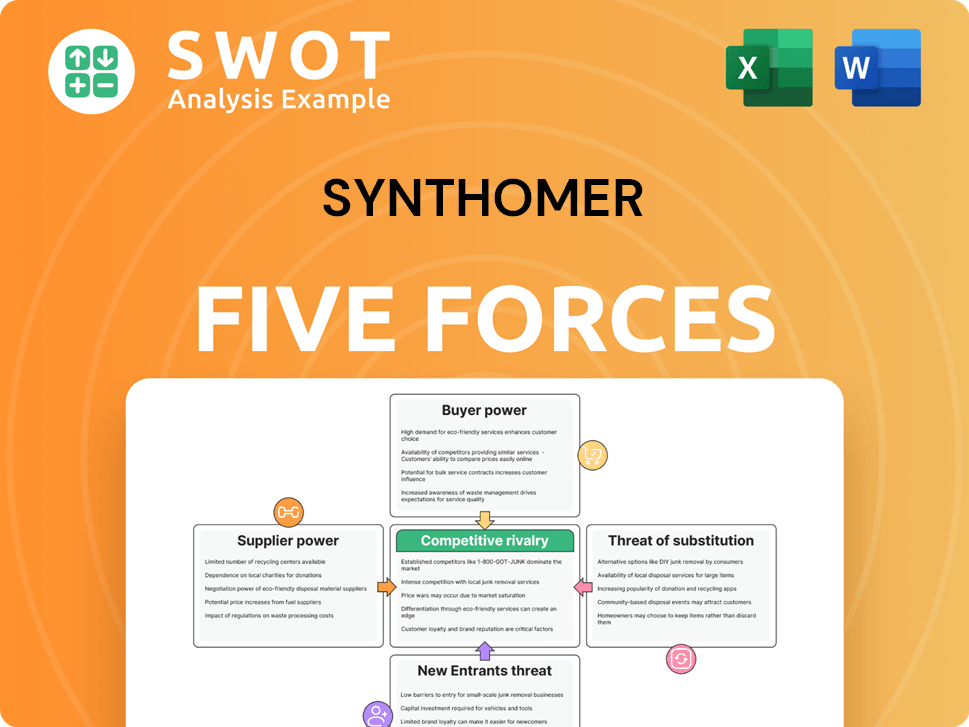
Related Blogs
- What are Mission Vision & Core Values of Synthomer Company?
- What is Competitive Landscape of Synthomer Company?
- What is Growth Strategy and Future Prospects of Synthomer Company?
- How Does Synthomer Company Work?
- What is Sales and Marketing Strategy of Synthomer Company?
- What is Brief History of Synthomer Company?
- What is Customer Demographics and Target Market of Synthomer Company?
Disclaimer
All information, articles, and product details provided on this website are for general informational and educational purposes only. We do not claim any ownership over, nor do we intend to infringe upon, any trademarks, copyrights, logos, brand names, or other intellectual property mentioned or depicted on this site. Such intellectual property remains the property of its respective owners, and any references here are made solely for identification or informational purposes, without implying any affiliation, endorsement, or partnership.
We make no representations or warranties, express or implied, regarding the accuracy, completeness, or suitability of any content or products presented. Nothing on this website should be construed as legal, tax, investment, financial, medical, or other professional advice. In addition, no part of this site—including articles or product references—constitutes a solicitation, recommendation, endorsement, advertisement, or offer to buy or sell any securities, franchises, or other financial instruments, particularly in jurisdictions where such activity would be unlawful.
All content is of a general nature and may not address the specific circumstances of any individual or entity. It is not a substitute for professional advice or services. Any actions you take based on the information provided here are strictly at your own risk. You accept full responsibility for any decisions or outcomes arising from your use of this website and agree to release us from any liability in connection with your use of, or reliance upon, the content or products found herein.